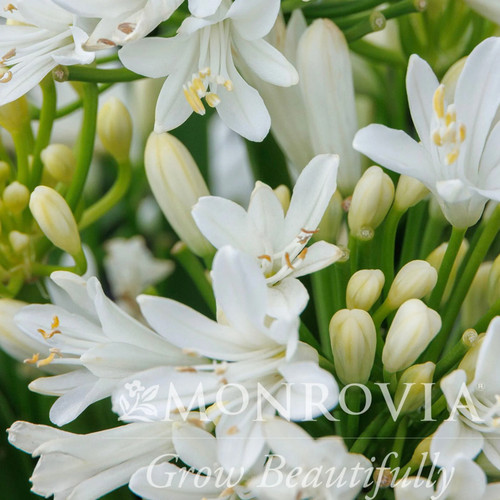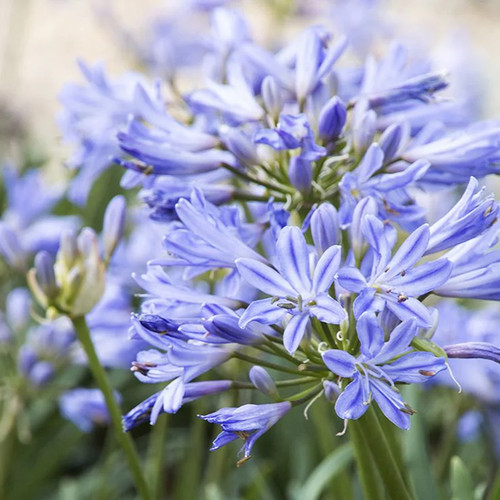
Agapanthus
Uses:
- Drought Tolerant
- Disease & Pest Resistant
- Attracts Butterflies
Features:
- Unique Flowers
- Easy Care
- Hard To Find Plant
Sunlight:
- Full Sun
- At Least 6 Hours of Direct Sunlight
Growing Zones:
- 7-11
- What is My Zone?
Agapanthus plants are flowering perennials that have wonderful blue, purple & white shades. Perfect for pollinator gardens, cut flower gardens, edging and borders.
Why Buy Agapanthus Online
Agapanthus, commonly known as lily of the Nile (or African lily in the UK), is a unique flowering plant native to Southern Africa. The tubular flowers can be purple, blue or white and bloom in the summer up until the fall. The leaves have a leathery texture and are aligned in two opposite rows. Gardeners in warm climates (zones 7 to 11) can grow agapanthus as a perennial.
Purple, blue or white flowers
Great as a cut flower
1 to 3 feet tall
Growing zones 7 to 11
About Agapanthus

African Lily, Lily of the Nile
Native to South Africa
Perennials
Evergreen
8–11
Blue, violet, purple, or white
Late spring to summer, with variations depending on the climate
Clumping; forms a rounded mound of strap-like leaves with tall flower stalks
Bees, butterflies, and other pollinators
Drought, heat, and poor soil once established
Deer and rabbit browsing
How To Use Agapanthus In The Garden
Agapanthus, also known as Lily of the Nile, is a perennial favored for its tubular flowers in shades of purple, blue, or white. The plants are 1 to 3 feet tall and up to 2 feet wide. Native to Southern Africa, Agapanthus is both heat and drought tolerant and can be used in xeriscapes and hot climates. The upright, strap-like leaves add structural interest to gardens.
Agapanthus delivers tall flower clusters that bring structure and interest to a mixed border or focal planting. Position them in groups near walkways or seating areas for a summertime display that draws pollinators and complements surrounding greenery. In containers, these robust perennials offer a sleek silhouette suited to contemporary or minimalist designs. Pair them with lower-growing companions to highlight their upright form, and reserve a few stems for cut arrangements.
Agapanthus Care
Agapanthus thrives in full sun and rich, moist, well-drained soil. Plant the rhizomes approximately 2 inches deep, with the pointed ends face upward. After planting, water thoroughly and regularly during the growing season to establish a strong root system. Fertilize twice a month with a water-soluble formula rich in potash.
Deadhead spent flowers by removing the entire flower stem to conserve the plant's energy. For deciduous varieties, prune spent foliage in early spring before new growth emerges. In cooler climates, bring potted agapanthus indoors for the winter, placing them near a sunny window and reducing watering to once a month. Pots can be returned outdoors in the spring after the risk of frost has passed.
Learn More About Agapanthus Care

Agapanthus Companion Plants
Choose companions that revel in full sun, sharply drained soil, and mild winters, conditions that keep agapanthus perennial. Rosemary meets these requirements, offering evergreen structure and matching drought tolerance, while butterfly bush towers behind with midsummer panicles that draw pollinators long after agapanthus finishes. Ground-cover thyme cools the soil surface and blocks weeds, and a clump of pennisetum or another ornamental grass echoes the strappy leaves and extends vertical interest into autumn.















